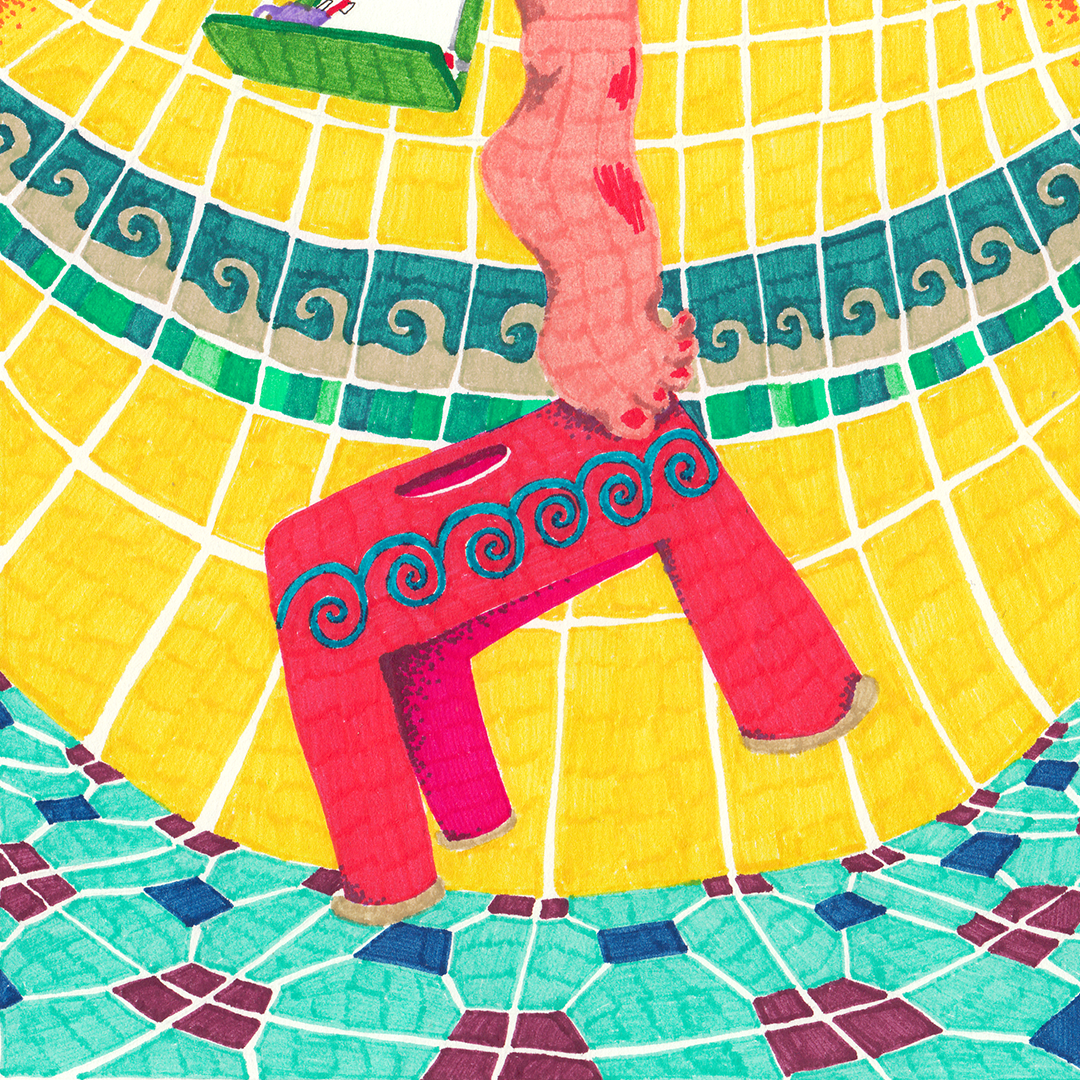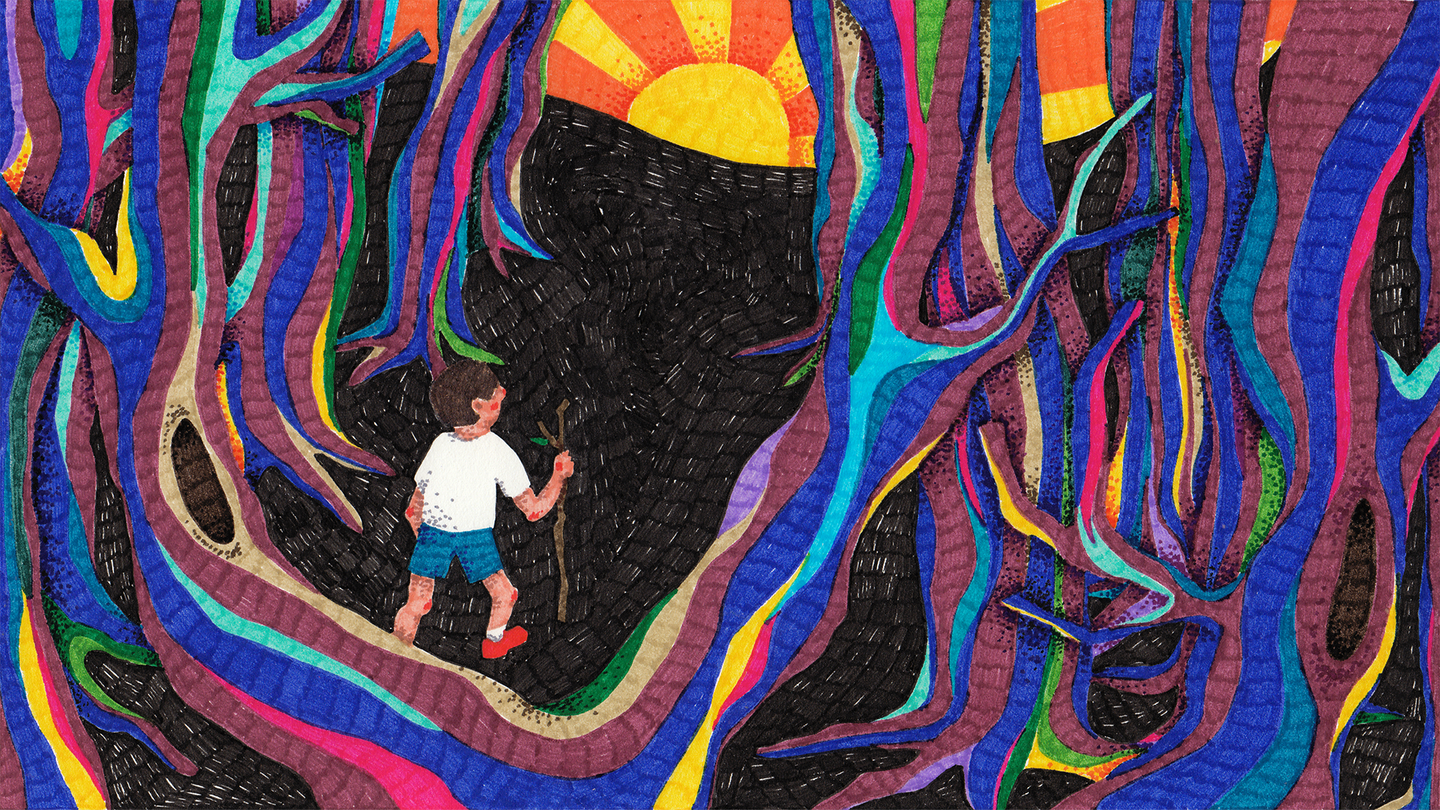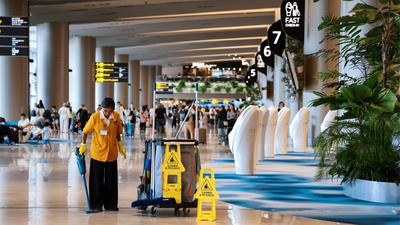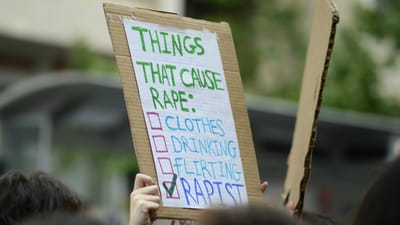In school, we are given questions and told to find the answers. We’re led to believe that challenges arise from complex solutions, and we’re trained to work with those complexities. But I had the fortunate misery of learning, earlier than any child should, that life is actually about discovering the right questions. For at the age of six, my whole world was turned into a question: what is wrong with me?
I remember my six-year-old self brushing his teeth in Hong Kong: the taste of toothpaste on my tongue turning fuzzy, the water in the mirror starting to make waves without flowing, and my plastic step-stool no longer feeling as secure as it had been for years. I remember waking up on a bed, my parents beside me, and asking them if they had let the teacher know that I wasn’t going to school that day. My priorities were obviously on point. What I don’t remember from that day, and only found out nearly a decade later, is everything that went through my parents’ minds in those thirty minutes that I was asleep: He’s gone. Call an ambulance. No—he’s breathing, he’s back! Call a doctor. Why won’t he wake up? How did this happen? What did we do? What didn’t we do? Call the hospital. Call HKIS [Hong Kong International School]. One seizure in my brain, seizing the thoughts and emotions of those all around, freezing them in uncertainty.
For a teenager, having no guidelines can be a terrifying and wonderful thing. In school, it gives us the freedom to explore our own interests rather than mindlessly answer questions. There is one question, though, for which I have always used guidelines: “Who are you?” By this point, I have defaulted to “I’m from everywhere, really”, “I’m interested in a variety of disciplines”, and “I’ve moved around quite a bit.” My story has always been one of a stranger in a strange land: I was born in Virginia, moved to Chicago at the ripe old age of one, then took off to land in Hong Kong at four, and finally settled in Singapore at seven. It took me a while to understand this, but Singapore’s beauty lies in the idea that when everyone is a stranger, no one really is. Even the Singapore American School (SAS), where I now study, had to include the names of two countries in order to encapsulate its ethos. It may be modelled off the American curriculum, but it embraces Singaporean culture and influence, just as I have come to do myself.

The first time I fell, in Hong Kong, I had been in the darkness long before my eyes closed. Even with my pupils dilated to the size of dollar coins, there was neither an orchid nor a merlion to be seen in their reflection. Pale, lifeless, unforgiving. In Hong Kong, my options were binary: expose myself to toxic medications for epilepsy that would leave me a husk of the man I could have become by middle age, or accept the fact that my life would always be a series of extra precautions and annoying restrictions.
By that time, through their own experiences, my parents were well versed in the idea of finding the right questions. What is the third option? And so started the torrent of ECGs, EEGs, EKGs, and MRIs. For me, the best path was whatever rid me of this affliction which I could not even understand, much less make a concerted effort to fight. And so we went along with all the tests and the follow-up appointments. Maybe somebody could tell us the answer to my problems, how to “fix” me, even though all we were really doing was running on a treadmill of indecision. By the time we left the MTR for the MRT, all we thought was that there were more things wrong with me than we could possibly have imagined.
Nothing like a mother’s love, goes the aphorism. In my life, there is nothing like a mother’s refusal to give up. When we came to Singapore, she was the first to hop off that treadmill. She wouldn’t let me take those medicines, and that was final. What followed was a year of calm for me, and a flurry of reading, research, and emotions for her. But at the end of that year, just when I was beginning to think I had escaped a life I did not want to live, it all went dark again.
One makes for an anomaly, but for an eight-year-old, two makes a trend. According to the World Health Organisation (WHO), the second time confirms the diagnosis: epilepsy is defined as having two or more unprovoked seizures. For a family, the second time marks a shift from inquisition to desperation.
Today, some 50 million people—or two in every three hundred around the world—live with epilepsy. Our community is bigger than the population of Spain and only slightly smaller than that of South Korea. Seizures, the result of excessive electrical discharges in a group of brain cells, can vary in severity and frequency, from less than one a year to several a day. Though epilepsy has been known to humans since at least 4000 BCE, and is so widespread around the world, its root causes are only known in one of two cases.
For the first few years of my life with epilepsy, we were asking the wrong questions. They only led to more tests, more expenditure, and more joy being sapped from the youthfulness of a third-grader. But you only need one right question. Mine came from the things I was putting in my mouth every day. You are what you eat; this was made painfully clear to me by Dr. Suzie Rucker, the nutritionist in Singapore who saw through the surface of my problems to identify what they really were. Every time I indulged in sugar, gluten, and dairy, I fed a bacteria in my gut more than myself. It sapped my strength every day; so much so that twice in my life, my body no longer had the strength to carry on.
Epilepsy is very rarely a standalone affliction. Rather, it is often a manifestation of a deeper issue. For me, it was the problems that I inherited in my gut. With my mother being a celiac—unable to eat gluten—eating had always been treated as a science in our family. Until third grade, I had boasted that my mother couldn’t eat bread and my father couldn’t have apples or almonds, but I ate anything and everything. In my mind, diets were something that people did when they wanted to lose weight. So when my parents broke the news that I, as a ten-year-old, would henceforth be more restricted in what I ate than either of them, I was frustrated and confused. I learned, however, that there were important differences between refined and natural sugar, that butter had lower lactose content than milk, and that gluten is a blight on the face of the Earth, sent to ruin us all. (Admittedly the last one might be a little biased.) I also learned that I would be bringing my own “everything-free” cupcakes to birthday parties, and refusing cake from bewildered moms who had never seen a kid reject sugar.
Even though it is no longer required from an epileptic pressure, my diet is still much cleaner than it was before. We were never able to identify a specific trigger to my seizures. So we took care of them all. A headache in the morning after not sleeping enough meant staying home from school, contact sports were never an option, and perhaps worst of all, I still haven’t watched “Incredibles 2”. If I were to focus on all of these little things, it would be easy to wallow in self pity for the many years I have left. I choose not to.
Epilepsy is not completely curable. Once you are diagnosed with it, there will never be a day when you celebrate being rid of it. But in my mind, that is as much an opportunity as it is to some a curse. It will forever be a part of who I am, but I was given the gift of being able to ignore it on most days. Those of us bestowed with this gift owe it to the others in our community to not squander such good fortune.
My parents would not stand for toxic medications because of the higher risk for a host of diseases, disorders, and misfortunes later in life. Yet even if they had let me go down this route, I would still be among the luckiest of us. I would be cared for by one of the best healthcare systems in the world, held up by a close-knit web of cardiologists, neurologists, and paediatricians all expertly trained in their field. While America spends 17 percent of its annual national budget on its healthcare system, Singapore spends only four percent. Yet, Singapore is able to provide world class public and private healthcare, while the American healthcare system struggles to meet its citizens’ needs.
Broadly speaking, up to 70 percent of our community could live completely seizure free, but only a fraction does, largely because of socio-economic inequalities. Of the 50m people worldwide with epilepsy, nearly 80 percent live in low- and middle-income countries, says the WHO. Roughly 75 percent of those in low-income countries do not get the treatment they need, which rises to 90 percent in some countries. They will never have access to such medicines, much less be able to consider long-term alternatives, due to their gargantuan costs. I hope to one day reduce that number, but for now I can at least speak to the relatively more privileged amongst us, including in Hong Kong and Singapore. Moreover, there may be others, like me, for whom the answer lies not in expensive treatments, but dietary change.
I must confess, the child in me still resents the nutritionist who told my parents that the solution to my problems was removing seven-tenths of my diet (and somehow all of my favourites). My gratitude, on the other hand, is twofold. To my parents—and especially to my mother—for ignoring the medicine and fixing me for life, and to this country, for always having what I needed to become the best version of myself. Whether it was odd-sounding foods, or having to accommodate my “everything-free” diet, there was always some place amongst the glass and concrete which served the water to my Fountain of Youth. Unknowingly, I found myself using Singapore as a crutch during my early walks of life so I could live to the day that I would come back and use a cane to show my grandchildren the mundane wonders of Woodgrove Condo, in Woodlands, near SAS.
That quaint apartment, which always seemed too empty and too full at the same time, welcomed my grandparents to our side of the world. For half the year, there was a puzzle laid out on the centre table, a sign that my grandmother was near. Truth be told, I still do not understand—and might never—how she managed to finish them faster than they came into the house. After seeing her go through scores of them, I began to notice a pattern. The most difficult part of the puzzle-making process wasn’t at the beginning, when you could clearly see which parts framed the question. It certainly wasn’t at the end, when you could match the pieces into the final empty bits, their outlines perfectly shaped by the answers already put in place. No, the hardest part came in the middle, when even the most experienced puzzlers might falter. Far removed from the starting motivation, and still so far from the finish line. That’s when the temptation was at its strongest to go and find a guide, see a video, walk the beaten path. Some say courage is genetic, and so perhaps the same qualities which led my grandmother to find her own solution led my parents to find mine. After sixteen years of trial and triumph, my story cannot be told from one perspective. One of the most important protagonists through these years has been Pulau Ujong, the “Island at the end”, that gave me a new beginning.
The dazed six year old on his parents’ bed could never have imagined that one day he would be in a lab, studying the organ which betrayed him. A decade later, that’s exactly where I was. We all want to change the world, and it’s in the lab that I feel like I am. As I hunch over frosted slides, mounting micron thick tissue so I can better understand how the brain works, I know that I am setting myself up to use my experience in the future. Use it to improve the lives of millions of other children who may one day have something different about their brains, too.
Epilepsy is not a forgiving partner. It will chastise you for staying awake too long at night, speak to you as a little voice that holds you back. It might stop you from playing the sports you like, eating the food which you enjoyed in the “Before”. But just like there was a “Before”, there will also be an “After”. This “After” may not be the same as the “Before”, but it will help you understand, no matter who you are, and no matter what problem you are dealing with, that you are better off than Sisyphus.
No matter how many times that obstinate boulder comes rolling back down, eventually the only path back trails down the other side of the mountain. Like others in this community, I have always had conflicting thoughts pushing from the inside. Would I never be able to perform in the classroom at the same level as my peers? Would I ever succeed on the field or the court? How could I compete when other people’s brain waves march to the beat of a steady hand—and mine dance to jazz? Could I even tell people about why I was “broken”? When I was younger, I let these questions stop me from pursuing my dreams one too many times. Eventually, I realised that life is simply too short to hold yourself back. As you slide down the other side of that mountain, trying to slow yourself down after all the times you had to stop in the past, you, too, will realise that the time for stopping is over. As you run off into the wilderness beyond, the mountain will fade to become a memory. Its shadow marked on a canvas of clouds, but its precarious slopes left in the wind.
Aryan Pershad is a 12th-grade student at Singapore American School (SAS). He was diagnosed with epilepsy in 2013; since then he has studied neurological disorders in various settings: at school, online, in research labs and via computational biology platforms. He has also mentored pediatric epilepsy patients around the world. Beyond SAS, he hopes to build bridges among academia, policy makers and the business world with an aim to commercialise treatments for CNS (central nervous system) illnesses.
Letters in response to this piece can be sent to sudhir@jom.media. All will be considered for publication on our “Letters to the editor” page.
If you enjoy Jom’s work, do get a paid subscription today to support independent journalism in Singapore.







